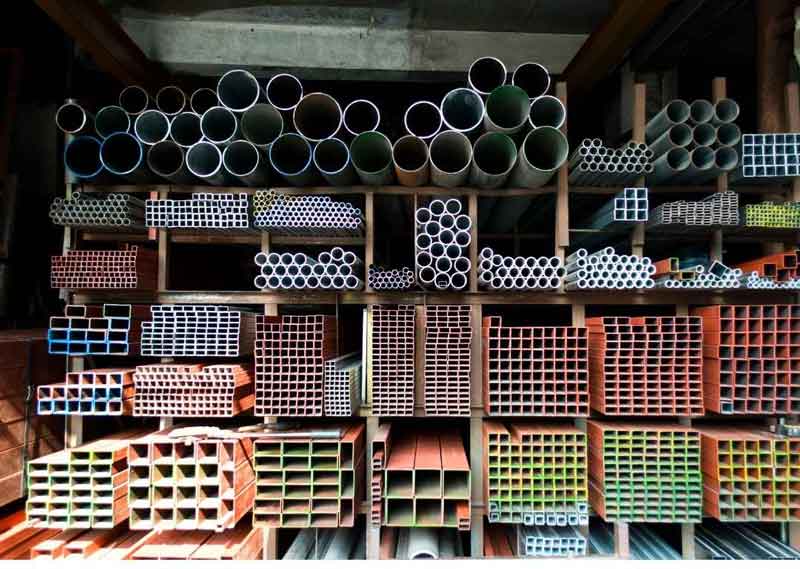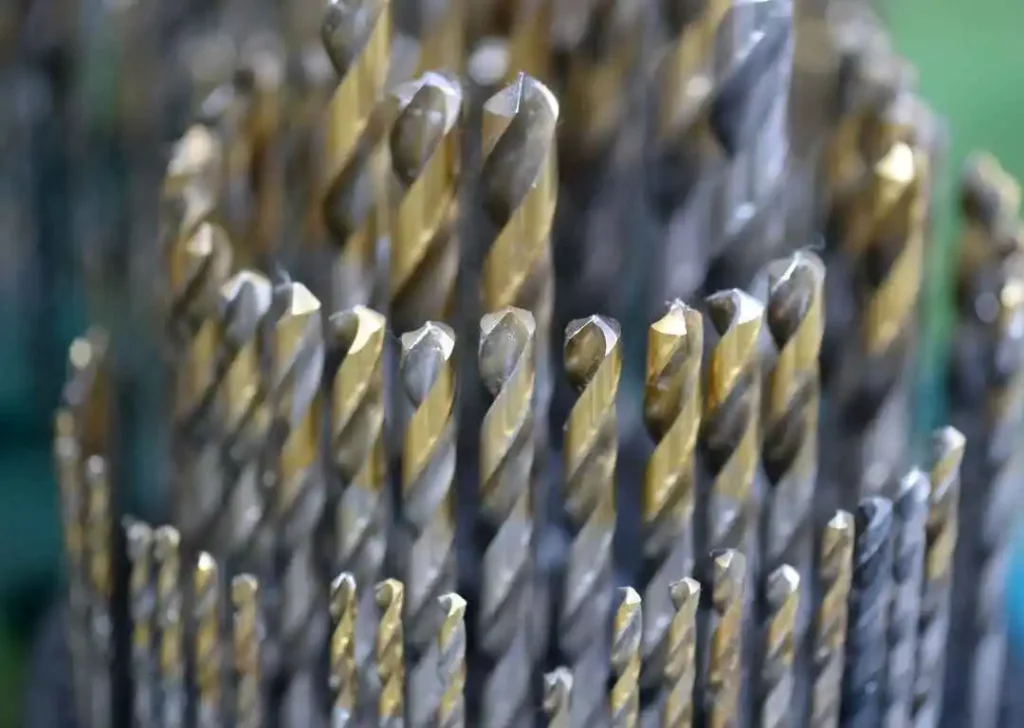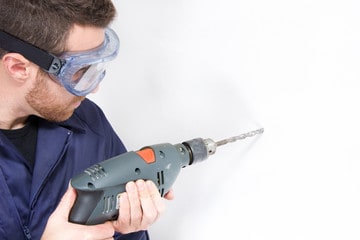Stainless steel is widely used in interior design and architecture. However, using stainless steel could be challenging when drilling through efficiently. Follow the easy 07 steps discussed in the article for hassle-free safe drilling on stainless steel.
1. Identify the Workpiece
Stainless steel is an iron alloy that includes a minimum of 10.5% chromium carbon, also silicon and manganese. Some stainless steel will also contain nickel and molybdenum to improve corrosion resistance.
Normally, Stainless steel is applied in
- Kitchen accessories, cutlery, and cookware. Cookers, grills, sinks, saucepans, refrigerators, Countertops, and dishwashers
- Plumbing industry, Chemical industry
- Bridges, buildings, airport buildings, Storage tanks, power plants,
- Aircraft and aviation industry, shipping industry, power plants, etc

Even though stainless steel is not the hardest metal, it is quite difficult to work with when it comes to drilling. Heat does not dissipate immediately due to poor thermal conductivity in stainless steel. Therefore, when drilling, the cutting edge will get extremely heated, causing deterioration and damage.
When drilling at high speed with a slow feed, stainless steel gets hardened, which can add stress to machinery and drill bits. Due to this reason, there is a huge chance of drill bits being broken. Consequently, it is important to choose a strong and hard drill bit that can withstand high temperatures like cobalt drill bits.
Compared to other metals, stainless steels are heavily ductile, making it hard to remove chips that will gather around the edges.
Read More About
2. Choose The Right Drill and Drill Bit for Stainless Steel

There is a wide range of drill bits appropriate for drilling stainless steel. When choosing the right drill bit, it is crucial to consider its heat resistance capacity and hardness.
Cobalt drill bits are specifically designed to provide heavy-duty execution on high-tensile metals. They are made with steel alloy with between 5% (M35 Grade) to 8% (M42 Grade) cobalt content. Cobalt boosts the power of the parent alloy, enhancing heat resistance.
TiN-tipped High-Speed-Steel (HSS) is ideal for drilling stainless steel as the included Titanium Nitride lessens friction, minimizing the heat that hardens the material.
When drilling into stainless steel, make sure you keep the drill at a straight angle to the workpiece and drill with an even force.
Do I need a Special Drill Bit for Stainless Steel?
Yes, you need special bits for stainless steel made with lasting formation such as high-speed steel, titanium nitride, or cobalt. Your drill bits should be strong enough to drill through hard materials and resist heat. Regular bits will not be able to deal with it.
3. Place Stainless Steel Workpiece Properly

Before you start drilling, secure the workpiece to a sturdy surface using clamps or a vice. Do not hold steel using one hand when drilling with the other.
It will make the steel spin or slash with the pressure you add. Make sure to use at least two clamps to safely hold down the workpiece. In addition to that, you must have sufficient clearance to prevent drilling into a table or a vice.
4. Start the Stainless Steel With Center Punch and Lower RPM
Many believe that the faster you drill, the quicker the workpiece will get drilled. This is a huge misconception when it comes to drilling stainless steel. Speed drilling produces a lot of heat. When stainless steel is heated, it gets hardened fast. When the stainless steel is work hardened, it will be extremely hard to drill into. Accordingly, it is recommended to drill slowly to avoid the steel getting heated.
Another fallacy is that extreme pressure will get the job done easily. When you add a lot of pressure to the steel, the same thing will happen, as when you drill at a high speed. Excessive pressure will result in unwanted heat. It is wise to start drilling with light pressure and gradually increase the added pressure till you can see fine spiral cuts around the cutting edges.
| Drill Bit Size in Inches | Drill Bit Size in Millimiters | RPM |
| 1/16 – 1/4in. | 1.6 – 6.35 | 1000 – 2000 RPM |
| 1/4 – 3/8 in. | 6.35 – 9.52 | 700- 1000 RPM |
| 3/8 – 1/2in. | 9.52 – 12.7 | 500 – 700 RPM |
| 1/2 – 1in. | 12.7 – 25.4 | 150 – 500 RPM |
| 1 – 1 1/2 in. | 25.4 – 38.1 | 100 – 150 RPM |
| > 1 1/2 in | > 38.1 | 80 – 120 RPM |
When drilling a hole, many end up drilling in different spots other than the targeted spot. Therefore, doing a center punch before you start drilling is important to ensure that the tip of the drill bit does not wander around.
Moreover, when drilling, you can not miss lubrication to lessen the friction. A promising drilling lubricant will minimize friction, controlling the heat build-up. There are best-cutting oils available such as thread-cutting oil. Less friction means less heat.
5. Apply Coolants on the Stainless Steel Cutting Face

If you use hand tools for drilling, it is important to apply a sufficient amount of cutting oil or lubricant to the area where drilling is happening. You can get coolants such as pastes, and oils, and of course, try using water.
Cutting oil is one of the best coolants you can ever use on stainless steel as it helps to clean swarf gather around drill bits controlling the heat by reducing the friction.
WD 40, CT-90 cutting oil, Anchor lube, Elmer’s Glue-All, Olive Oil, mining oil, and water will serve you better as some of the best coolants when drilling on stainless steel.
6. Cool the Drill Bit If Needed
It is impossible to completely stop the tools from getting heated up even though you work at a slow speed, pressure and using lubrication. So make sure to pause drilling when you feel the heat is building up, adding an even pressure.
It is not recommended to keep on drilling for more than thirty seconds without a break. Do not find it time-wasting to take breaks while drilling; this will avoid drill bit breakages and imperfect holes.
As larger drill bits can cause a lot of heating, try to limit using larger drill bit sizes. Many believe that dipping drill bits in normal water results best as much as cutting oils. Further, you can use a cutting compound to lessen corrosion and friction keeping the bits safe.
7. Use Several Drill Bits For Larger Stainless Steel Holes

In this situation, you have to begin with the smaller bit and gradually you can keep changing bits until you widen the hole to the expected size. Do not begin with the large drill bit as it can make a sloppy hole. This process might take some time and a little patience.
However, when drilling larger holes on stainless steel, many tend to use several drill bits to get the work done. However, it is more efficient and wise to go for a step bit rather than using several drill bits.
Step bits are available in multiple sizes. You can get a varied size range in one bit; for instance, ¼ Into 1-⅜ In. It will be much easier and smoother to drill larger holes, particularly on stainless steel, than using several drill bits. This will save the time you will have to spend on changing bits from time to time.
Can I use a Titanium Drill Bit For Drilling Stainless Steel?
Titanium drill bits are one of the strongest options when drilling into stainless steel, as they are high-speed steel drill bits (HSS) that have a titanium oxide coating. The incredible hardness of these drill bits makes them ideal for drilling through stainless steel.
What Type Of Cutting Oil Can I Use For Drilling Stainless Steel?
Cutting oil is the best lubricant to use on stainless steel. To use drill bits in a way that they last long, you should lubricate working edges while drilling.
As mentioned above, the toughest part of drilling into stainless steel is getting hardened with the heat. Cutting and drilling oil lowers friction and maintains both working materials and tools at a safe temperature to prevent any destruction caused by heat.
To avoid such circumstances do not forget to use suitable cutting oil when drilling. WD-40, Anchorlube, Evo Dyne, Hougen, Jancy, and TRIM are some of the best cutting oils we can recommend for drilling stainless steel.

